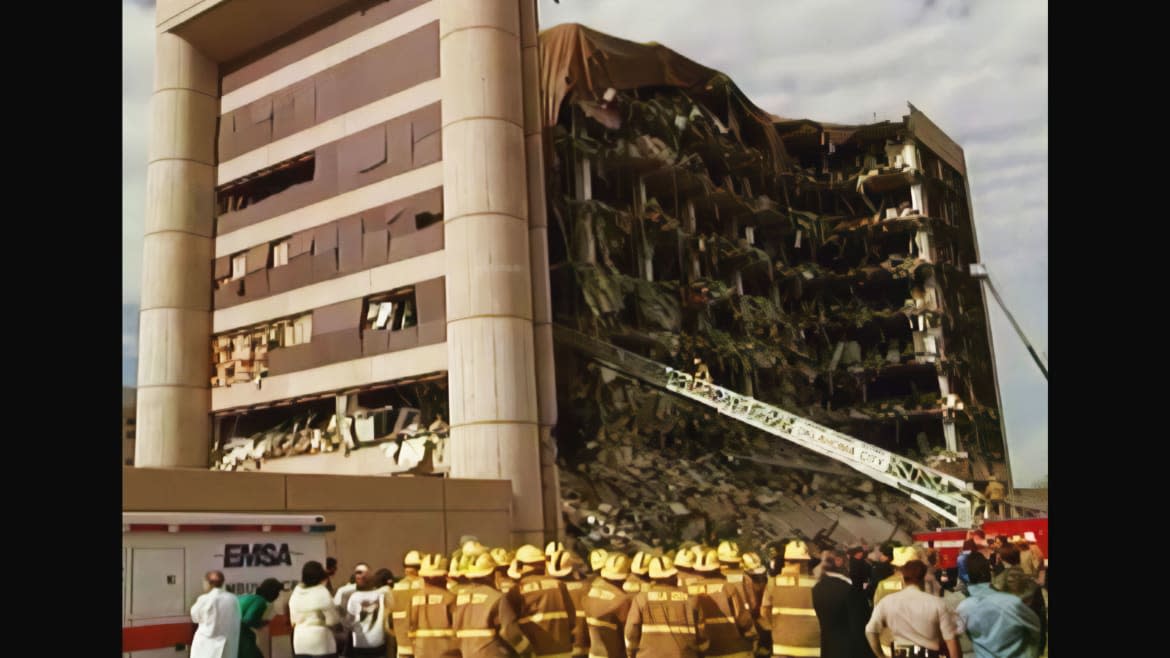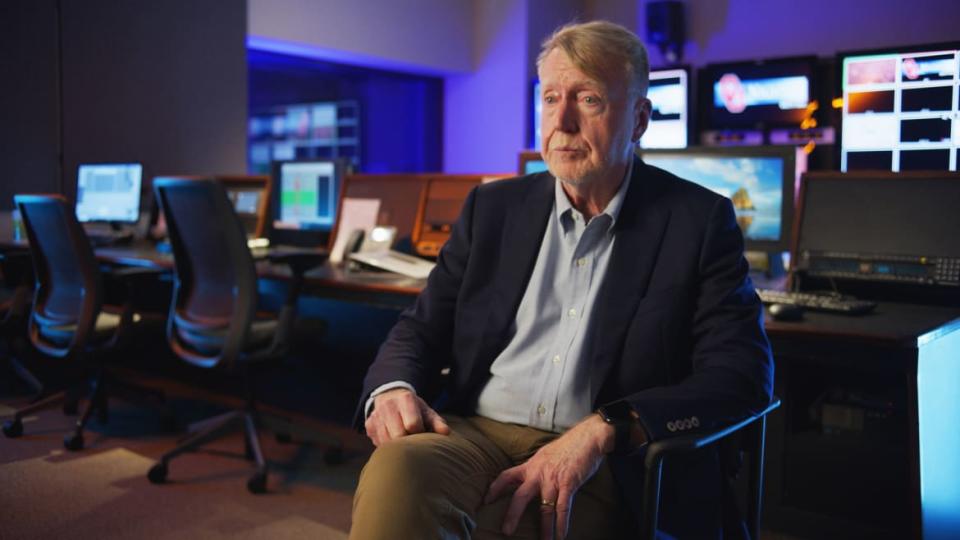The ‘American Bombing’ That Should Have Warned Us About Jan. 6

As the 29th anniversary of the Oklahoma City Bombing nears, HBO is revisiting the tragic terrorist attack with An American Bombing: The Road to April 19th (April 16), a feature-length documentary from director Marc Levin and producer Daphne Pinkerson (and executive producer Katie Couric) that not only investigates its prime subject but seeks to place it in the wider context of a burgeoning white power movement that began more than a decade earlier.
That framework is a valuable one that affords insights into some of the root causes of Timothy McVeigh’s slaughter of 168 people (including 19 children) in the city’s downtown Alfred P. Murrah Federal Building on April 19, 1995. Yet what’s conspicuously missing from this non-fiction inquiry—much to its detriment—is an attendant discussion of what came next, and how McVeigh’s actions directly and indirectly led us to our precarious present moment.
An American Bombing: The Road to April 19th’s initial sounds are of right-wing radio hosts railing against the assault weapons ban, the Brady Bill, and the ATF and FBI “shredding the Constitution.” These are some of the opinions that endlessly rattled around McVeigh’s head as he traversed the country between the siege at Waco on April 19, 1993 (which he attended) and his bombing attack two years later. And Levin opens with them to suggest the radicalizing power that Rush Limbaugh and his ilk had on certain segments of the population.
McVeigh was a man of grievances, and he expressed his frustration and fury at the country he’d served (via the military) by detonating a truck bomb filled with fuel oil and ammonium nitrate fertilizer that he’d collected during his travels. Motivated by his belief that he was answering a great call to spark a second Revolution—itself inspired by the virulent The Turner Diaries—McVeigh methodically carried out his strike. His handiwork was suitably monstrous, obliterating an entire side of the Alfred P. Murrah Federal Building and ending the lives of hundreds, including children who were in the facility’s day care center.

Mike Boettcher, investigative reporter and war correspondent
“It reminded me of Beirut,” says NBC correspondent (and Oklahoma native) Mike Boettcher, and footage of the wreckage corroborates that comparison. In the immediate aftermath, federal officials searched for a vehicle whose bumper they’d retrieved at the scene. That produced the name Timothy McVeigh, and as luck would have it, they swiftly discovered that they already had him in custody courtesy of a traffic stop for a missing license plate that, an hour and a half after the bombing, had resulted in his arrest. This put to rest the knee-jerk assumption that Islamic terrorists had been behind the massacre, and it shifted the attention of law enforcement and Bill Clinton’s administration to America’s deadly domestic threats, which had blossomed during the previous 15 years.
An American Bombing: The Road to April 19th provides a detailed and chilling blow-by-blow account of that fateful day from multiple perspectives, including police officers on the ground, citizens grieving their lost loved ones, and federal investigators tasked with initiating the case. In that regard, it benefits from the participation of numerous key figures in its story, from FBI special agents Danny Coulson and Bob Ricks, to grandmother-turned-activist Kathy Sanders, to then-President Clinton, who admits that once McVeigh was pinpointed as the culprit, his thoughts turned to the past.
Ann Coulter Gets Byline in NY Times, Which She Wanted Bombed by Timothy McVeigh
So too does Levin’s film, leaping backwards to the 1983 “first wave” of homegrown white nationalism when, in response to Ronald Reagan vetoing a massive bailout that would have saved the livelihoods of countless farmers (who were suffering from embargoes related to the Soviet-Afghan War), far-right leaders seized the opportunity to create what would become the “Patriot movement.”
Aided by commentary from ex-extremist Kerry Noble, the film lays out how economic desperation drove these individuals—with pseudo-prophet Jim Ellison at the forefront—to create groups like The Covenant, the Sword and the Arm of the Lord (CSA) in northern Arkansas during Clinton’s governorship. Director Levin deftly traces these organizations’ evolution from religious to paramilitary militias, culminating with an April 19, 1985, siege that came to a peacefully negotiated end. Courtesy of virulent hatemongers like Richard Butler (Aryan Nations) and Louis Beam (KKK), white-power extremism continued to grow, and it blossomed more after the federal government, in 1988, failed spectacularly in its bid to prosecute these groups for seditious conspiracy.
In the wake of that legal catastrophe, the sieges at Ruby Ridge and Waco further inflamed disaffected rural Americans—many of them veterans, including of the recently concluded Gulf War. In the case of McVeigh and his pal Terry Nichols, it compelled them to take action in the bloodiest way imaginable.

Oklahoma City National Memorial & Museum
Levin’s mix of archival footage and talking-head commentary does a fine job placing the Oklahoma City Bombing in a grander timeline, all while revisiting the attack with compassion and outrage. At a certain point, however, the film begins to treat April 19, 1995, as more of an end date rather than the deafening first warning shot in a conflict that’s still raging to this day. There may be, for example, some minor value in exploring Sanders’ attempts to discover if McVeigh had additional accomplices on the ground in Oklahoma City, or her and others’ efforts to forgive McVeigh for his offense, but such threads come across as less relevant than the bombing’s galvanizing effect on right-wing Americans.
To that end, Jan. 6 is only cursorily referenced during the course of the proceedings’ 104 minutes, and Donald Trump—the selfish and amoral demagogue that the white power movement has long waited for—isn’t seen or mentioned at all.
Couple those omissions with the film’s decision to ignore the role that the internet has played in allowing such splintered factions to find each other, congregate, and conspire, and An American Bombing: The Road to April 19th proves a history lesson that disappointingly cuts itself off too soon. By examining the before but not the after of the cataclysmic bombing, it ultimately tells us too little about how and why 2024 is still trapped in the shadow of McVeigh’s horrendous crime.
Get the Daily Beast's biggest scoops and scandals delivered right to your inbox. Sign up now.
Stay informed and gain unlimited access to the Daily Beast's unmatched reporting. Subscribe now.


